The archaeological sites of Xanthos and Letoon They are the most interesting you will find on a tour of the lycian coast and, without a doubt, it is one of the outstanding cultural visits in a trip along the Mediterranean coast of Türkiye.
In the 1998 Unesco He registered them on the list of World Heritage because they represent the best example of representative architecture of the ancient lycian culture, one of the most important of the iron age en Anatolia.
They also show an interesting mix of influences between Anatolian, Greek, Roman and Byzantine cultures along the centuries.
Xanthos was capital of ancient Lycia y letoon its main sanctuary.
Both sites are located away from any current population, about five or six kilometers away, and would surely be linked by a ceremonial road.
This isolation has allowed them to maintain their authenticity, and also provides visitors with a feeling of being far from today's world.
All the information in detail
History of the Lycian city of Xanthos
As we say, Xanthos ruins They are among the most attractive in all of Türkiye and deserve a detailed visit.
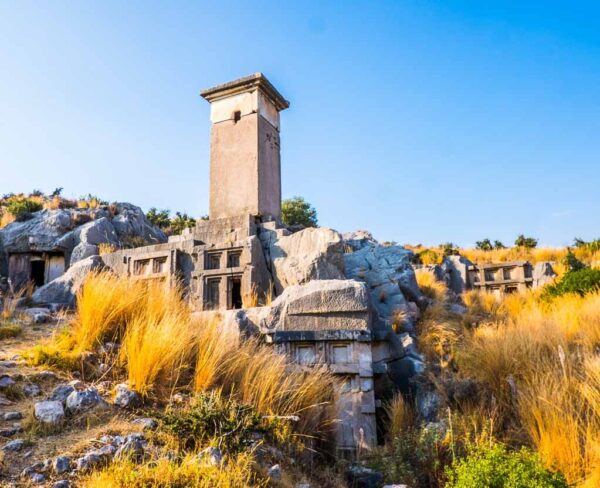
We must remember that in Spanish the name of the city is correctly written as Xanthus, but it is a spelling that we probably will not find in the guides or publications that we consult to prepare the trip.
That is why we choose to use here the name that appears in most sources that talk about the area.
Xanthos was main city of Lycia and its history is full of important episodes.
He fought to defend his independence against the Persians and then, in the Peloponnesian War against Athens. After the arrival of Alexander the Great, it turned into a hellenized city.
It was destroyed several times in ancient times, but was always rebuilt in the same place, constantly maintaining its importance.

It survived until the Byzantine era and its bishop depended on the Mira, where is the Church of San Nicolás.
When Charles Fellows excavated the archaeological remains in 1838, the place had been abandoned for centuries.
Fellows A large quantity of reliefs and other architectural remains were brought to London, which are now in the British museum.
What to see when visiting Xanthos
Excavations carried out in the 20th century have brought to light structures that represent the entire history of Xanthos, Since the lycian fortress of the s. VIII BC and the roman cityUntil the byzantine bishopric of the s. XII.
As happens in all Licia, the most interesting remains are the funerary monuments.
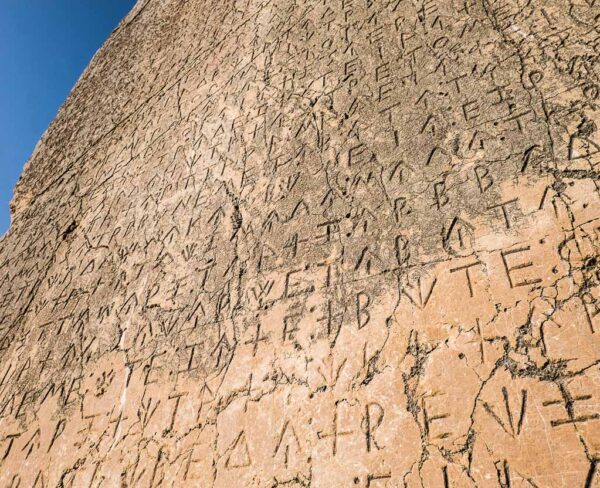
Unfortunately all the sculptural decoration It was looted and taken to London. although now you can see some reproductions.
Before reaching the entrance, you pass by the remains of the Vespasian Gate and Nereids monument, but time and looting mean that almost nothing remains, and the visitor will probably pass by it without noticing.
A secondary road crosses the site dividing it into two parts.
Some of the most attractive structures, such as the , and everything around it, are right next to the car park, and to protect the site, the main road now passes at some distance.
El ,, which dates from the s. II AD rests on one side of the lycian acropolis.
ORGANIZE your TRIP
- Don't forget your TRAVEL INSURANCE with a 5% discount
- Book the HOTEL for your trip
- RENT a CAR for your trip
- The best TOURS and EXCURSIONS in Spanish
- NO-LINE TICKETS for museums and monuments
- Best FREE TOURS around the world
- Book your TRANSFER from the airport
- eSIM card with INTERNET at the best price
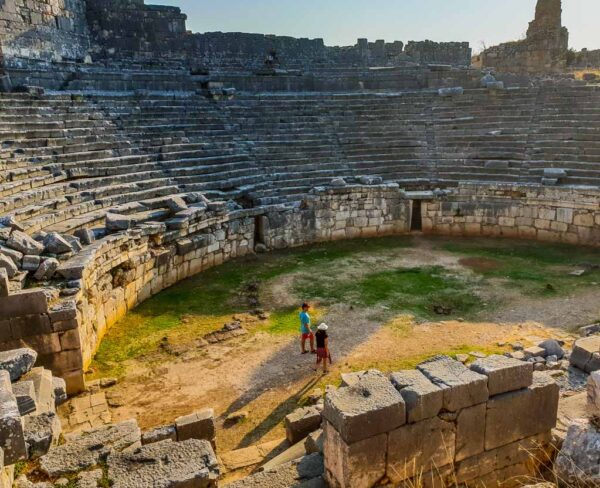
The oldest part of this acropolis are the remains of a royal palace Destroyed during the Persian conquest in the mid-19th century. VI BC; in their place now appear the ruins of byzantine buildings.
Next to the theater, two clearly stand out funerary monuments.
One of them is a tomb-pillar in which sarcophagus, beautifully crafted, that reproduces a lycian house where the lid resembles a gabled roof.
Right next door is the famous Tomb of the Harpies, where the sarcophagus is located on a high monolith.
This has the shape of an urn decorated with bas-reliefs, although what is seen is a copy, since the original is in the British museum.

It takes the name of the figures that the relief represents, but it is believed that they are not actually harpies but mermaids, hybrid beings with the head of a woman and the body of a bird.
It must be remembered that the image of the mermaid as a woman with a fish tail is of medieval origin, and in this relief the mermaids lead the souls of the dead to the afterlife.
A few meters away stands another very important monument of Xanthos.
This is the so-called wake xantia which presents a 250-line text in Greek and Lycian, which has been one of the main sources for deciphering this language, and also offers important historical information.
On the other side of the road lies the rest of Xanthos, where it is accessed by a large cobblestone avenue.
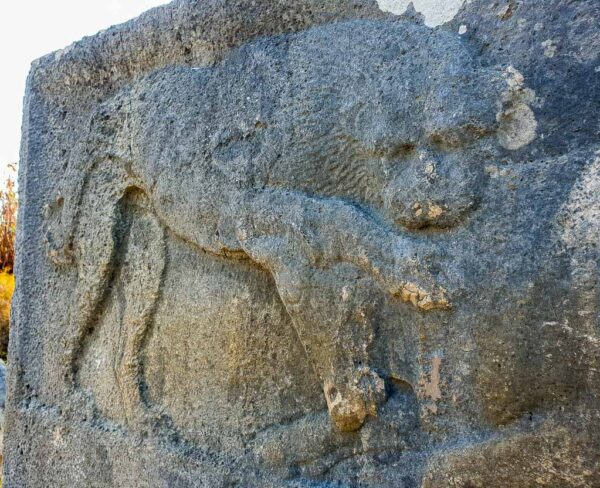
In this part the visit follows a path through the bushes and from time to time they appear sarcophagi half hidden among the vegetation.
There is a moment when you reach the big Wall, which goes up towards the hill where the acropolis used in the Hellenistic, Roman and Byzantine periods.
On the outside of the wall, the slope is covered with funerary monuments that appear as you progress. One of them shows a relief of a lion.
You have to look for a path that can go unnoticed among the vegetation to go in search of another necropolis.
There stands out another tomb-pillar located on the roman acropolis. In this area was the Payava sarcophagus which is now also in the British museum.
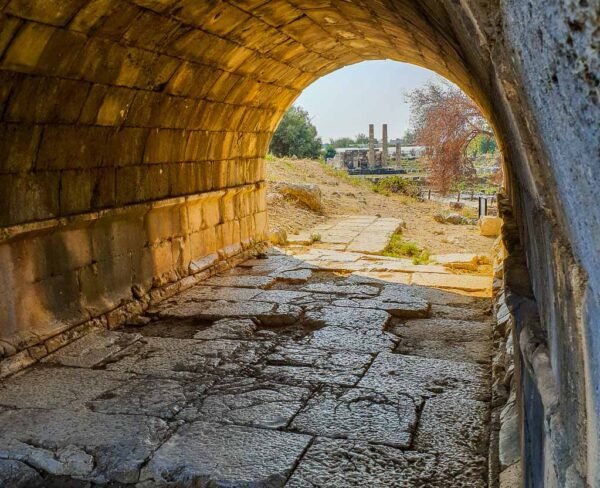
What to see when visiting Letoon
About six kilometers away by road, a little less if you follow the straightest path on foot, you reach the letoon, main sanctuary and meeting place of the ancient Lycia.
The name comes from Leto, the mother of the twins Apolo y Sagebrush.
The entrance is located next to the Roman Theatre, which is very well preserved, and whose side doors are considered the most beautiful in Asia Minor.
Much of the agora It is half submerged by a lagoon, and the base of a colonnade that would form the stoa, the porticoed area that served as a meeting point.
Don't forget your Travel Insurance
Are you organizing your trip or getaway? Don't leave without take out your travel insurance before, and here we explain why. If you hire it with us, you have a 5% discount

The presence of water in this area can be attractive. but it causes problems of conservation of the structure.
The heart of the sanctuary is made up of three temples very close together and facing south.
The smallest and oldest is the one located in the center, and an inscription from the middle of the 4th century BC suggests that it was dedicated to Sagebrush.
To your left is the largest temple, ionic like the previous one, and an inscription assures that it was dedicated to Leto. The one on the right, doric style, was that of Apolo.
In the center of the latter there is a mosaic perfectly preserved in which a harp and a bow appear with a quiver. They are the symbols of Apolo, god of music, and Sagebrush, the hunting goddess.
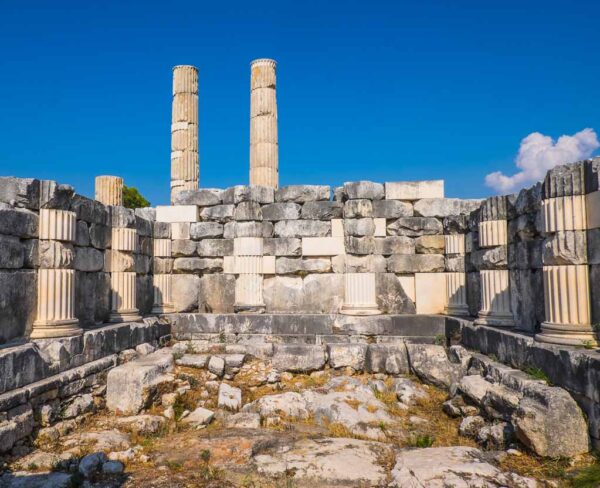
Near this temple was found the wake with an inscription in Greek, Aramaic and Lycian that can be seen on fethiye museum.
In front of the group of three temples is the nymphaeum, an imposing structure from the time of the Emperor Hadrian which preserves a 27-meter semicircular pool.
This nymphaeum It is located on the remains of another previous one.
The permanent presence of water in the letoon links with the story of remembering that some peasants prevented Leto drink from a fountain after giving birth; The mother, indignant, turned them into frogs.
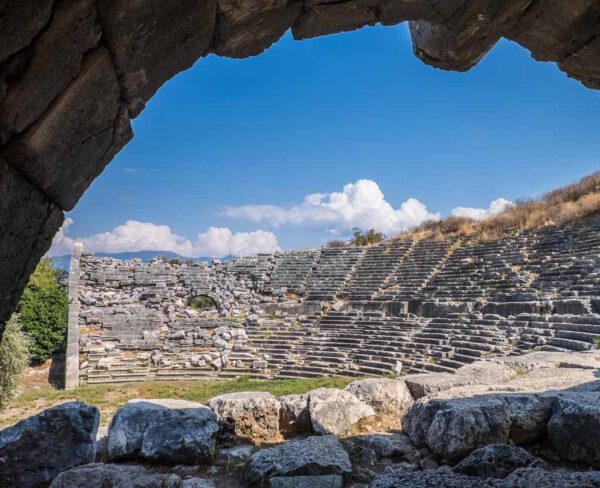
Visiting times for Xanthos and Letoon
The Xanthos visiting hours They are, every day of the year, from April 1 to September 30, from 10 a.m. to 19 p.m., and the rest of the year, from 8,30:17,30 a.m. to XNUMX:XNUMX p.m.
El price of tickets to visit Xanthos It is 14 liras (1,60 euros).
Meanwhile, the Letoon visiting hours They are, also every day of the year, and the same as those of Xanthos' visit.
El Letoon entrance fee It is 12 liras (1,35 euros).


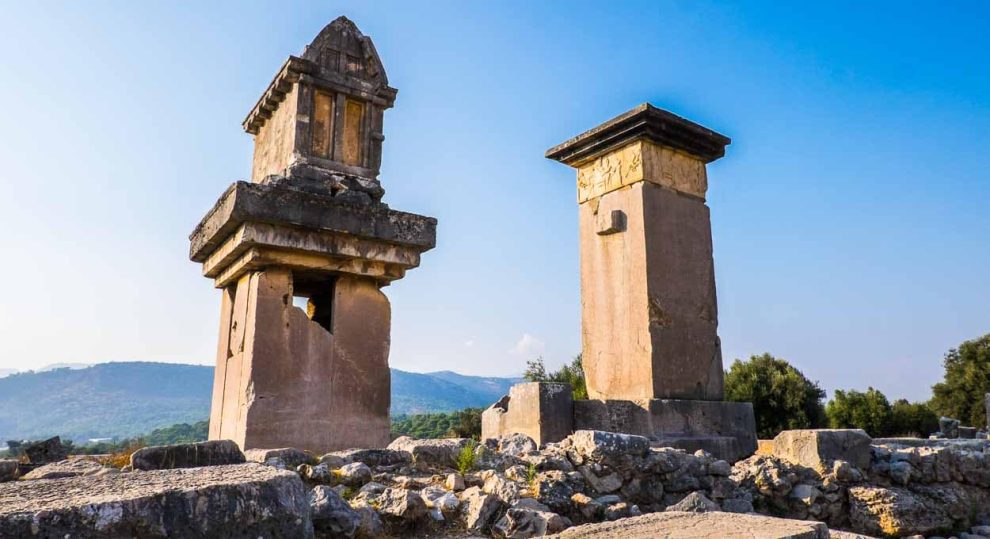

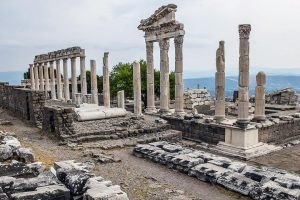










Comment